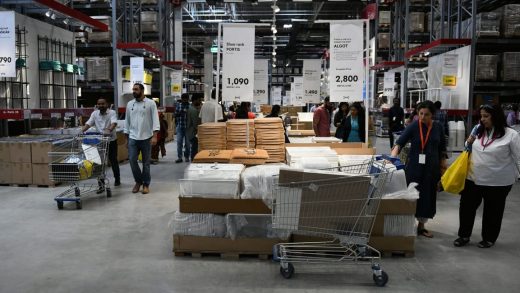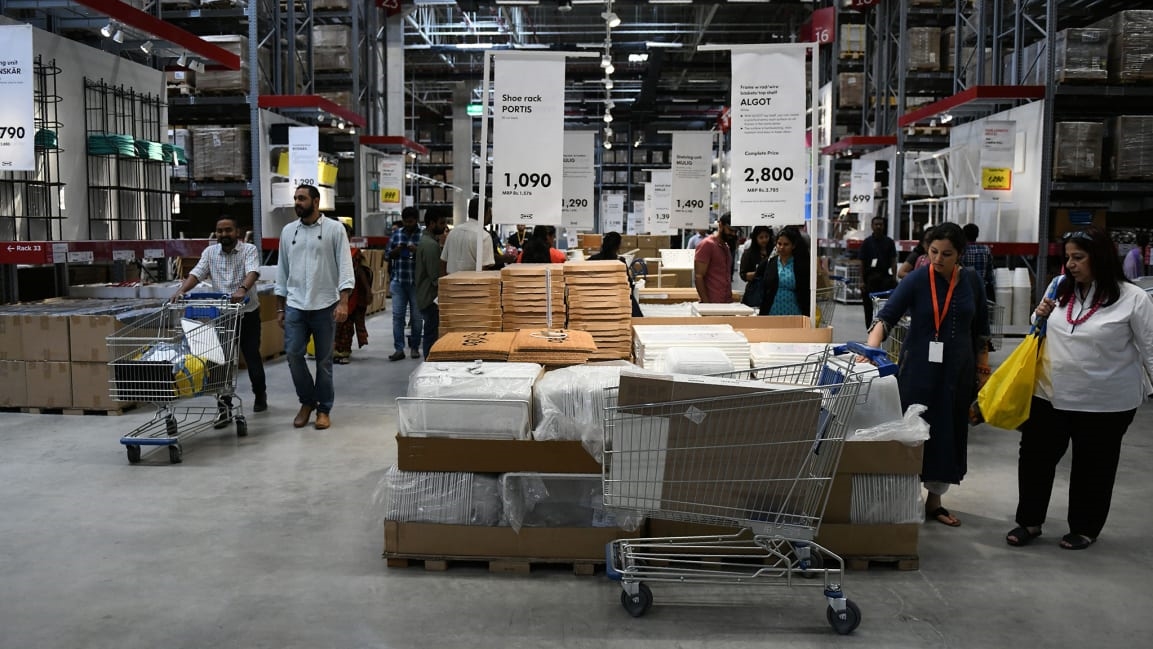The battle for India’s $32 billion furniture market heats up
Ikea is celebrating its first anniversary of operating in India. Even though the company secured regulatory approval to enter the country in 2013, it took five years of effort and significant investment before the first Ikea megastore opened its doors to Indian consumers in Hyderabad in 2018.
The response was overwhelming—40,000 shoppers turned up on day one, resulting in two-hour long queues just to get inside, while traffic built up outside the store. Ikea has since purchased land parcels in Mumbai, Bangalore, and Gurugram (near Delhi), announced a 10-fold increase in its employee numbers to 15,000, and set a target to reach 200 million customers in three years.
Despite Ikea’s big ambitions to increase its presence in India and capitalize on a growing middle class market, as well as its experience in doing so around the world, it faces stiff local competition from Pepperfry, India’s existing, largest online furniture retailer.
On the surface, there is no comparison between Ikea and Pepperfry. One is a global player with deep pockets, more than $40 billion in revenues, and decades of experience; the other is a six-year-old venture capital-backed startup that is yet to turn in profits. But a closer look at Pepperfry’s business fundamentals reveals that there is more to it than meets the eye.
Strategic choices
When Pepperfry’s cofounders, Ambareesh Murty and Ashish Shah, both formerly of eBay, made their first investment pitch to a venture capital firm in mid-2011, the concept of an online furniture marketplace was unheard of. Furniture was not a natural fit for e-commerce because of its high value and nonstandard nature (compared to books, music, or electronic goods). Indian consumers preferred local retailers or trusted carpenters over an online supplier. Plus, the supporting infrastructure in terms of logistics was lacking.
Undoubtedly, Pepperfry had decided to follow a riskier path in building a business model around an online platform. But its cofounders made some strategic choices to create a successful business.
One of the trickiest elements of the furniture business is offering the right combination of variety, quality, and price. Murty and Shah changed the game by building a well-curated offering from specialist merchants, small and medium enterprises, and artisanal woodworkers in furniture manufacturing hubs in north India. They built personal relationships with their suppliers, digitized their catalog, and constantly improved their operations. After carefully selecting and listing products, they then used data analytics to track which ones are most popular and scale up or remove them accordingly. Based on consumer choices, they continually give feedback on designs and trends to their manufacturers.
Success so far has also been built by ensuring that Pepperfry offers customers the same service in multiple ways—whether that’s online via their computer or mobile, or offline. This omnichannel approach is increasingly important for the success of any retail business.
The company launched Studio Pepperfry, an offline store, in Mumbai in 2014—an industry first for an online platform in India. It now has 65 studios across 28 Indian cities. These studios act as experiential centers and are staffed by interior designers to help people choose what they want. Nothing is for sale; instead, the studios act in service of the online offering.
The third and perhaps most important element of Pepperfry’s success has come from building its own logistics arm —including first-mile pickup and last-mile delivery of all the company’s furniture. Consider transporting a 660-pound wardrobe more than 900 miles from the manufacturing site in north India to the largest demand center in south India. This involves going through multiple hubs before the wardrobe reaches the end consumer, resulting in skyrocketing costs, as well as very high chances of breakage.
After a poor initial experience with third-party logistics providers and the lack of alternatives in the Indian market, Pepperfry decided to build its logistics infrastructure from the ground up and learn on the go. An in-house logistics arm is another industry first in India, particularly for an online platform provider. According to some estimates, Pepperfry’s logistics arm is the largest business-to-customer big-box delivery service in India.
Competitive advantage
Given Pepperfry’s competitive advantage, Ikea may struggle to beat this local startup. If anything, its strategy appears to mirror that of Pepperfry. Ikea recently announced it was reversing plans to launch its second store in Mumbai. Instead of opening the offline store, it is starting online sales instead. It will then introduce smaller outlets across the country, in sharp contrast to the signature Ikea shopping experience of large out-of-town megastores.
Ikea’s Hyderabad store manager, John Achillea, told India’s Economic Times newspaper that footfall in the Hyderabad store was two million below the projected seven million in the first year, and its sales numbers are not public. The store now runs a free shuttle bus service for customers from a few points around the city.
India is a large and growing market. The furniture industry there is worth $32 billion and projected to double to $61 billion by 2023. Ikea will be hoping to capitalize on this. But, in the meantime, Indian players have effectively held their ground by leveraging local knowledge and addressing the country’s infrastructure challenges.
Ivy Buche is associate director of the Business Transformation Initiative at the IMD Business School, and Amit Joshi is professor of digital marketing and strategy at the IMD Business School. This article was republished from The Conversation under a Creative Commons license. Read the original article.
Fast Company , Read Full Story
(30)



